Protecting heritage, sustaining tradition — Yunnan provincial legislature inspects local efforts to preserve ancient tea trees
Tea treasures
"My family has made a living from tea for generations. Life used to be hard — we lived in wooden huts with thatched roofs. But in recent years, as Jingmai Mountain has gained more recognition and better protection, our tea business has become more profitable, and our lives are getting better with each passing day," said tea farmer Yan Yikan.
Tea gardens centered around Jingmai have developed a comprehensive production system — from harvesting to packaging — while expanding into tourism, food and health products. In the first half of this year, Lancang Lahu autonomous county in Pu'er welcomed nearly 4 million tourists, generating tourism revenue of 3.4 billion yuan (around $477 million).

The ancient tea forest of Dapingzhang on Jingmai Mountain in Pu'er city, Southwest China's Yunnan province, is shrouded in mist and clouds. [Photo provided to npc.gov.cn]
Menghai county, another renowned tea-producing region, has been certified by the Guinness World Record for the "World's Largest Contiguous Ancient Tea Forest," with a total projected area of about 37,590 hectares. By integrating tea with tourism and enhancing ecological initiatives, Menghai has promoted the convergence of primary, secondary and tertiary industries across five ancient tea mountains, delivering the benefits of the Menghai Tea brand to more local residents.
From guarding ancient tea trees to starting organic tea farms, and from high-tech processing to wellness retreats inspired by tea — the humble tea leaf now supports a comprehensive economic cycle. It integrates growing, processing, research and development, cultural creativity and shipping into a unified system.
Currently, new forms of tourism, such as tea-picking, tea-making, tea-tasting, and travel photography, are thriving. Local services, like homestays and restaurants, have also been enhanced to cater to the growing number of visitors. All of this is bringing fresh energy and better livelihoods to rural communities.
Since the regulations came into effect, tangible progress has been made in accelerating the integrated development of the ancient tea tree industry with other industries. Across the province, efforts to integrate tea culture with tourism are well underway. A variety of new products and themed travel routes have been launched, including educational tours of tea mountains, and cultural journeys along the Ancient Tea Horse Road, a historical trade network in southwestern and northwestern China primarily used for trading tea and horses.

A tea farmer is picking tea. [Photo provided to npc.gov.cn]
"In recent years, we have adopted technologies such as tree radar to enhance the protection of ancient tea trees and ensure sustainable development based on sound conservation," said Lin Song, a deputy to Menghai County People's Congress and director of the Menghai County Tea and Green Food Industry Development Center.
The inspection team identified several challenges in enforcing the regulations and put forward several recommendations. They called for efforts to improve training and public outreach to strengthen conservation awareness and practices, enhance legal protections for ancient tea trees, and carry out planned measures to ensure sustainable and healthy development. They also urged endeavors to promote the integrated development of the tea industry, tea culture and tea technology to enhance the value of ancient tea resources and support high-quality growth across the sector.

Tourists are taking photos at the ancient village of Nuogan in the spring scenery on Feb 10, 2025. [Photo provided to npc.gov.cn]
- Chinese president appoints new ambassadors
- Top legislature schedules upcoming session in October
- China's top legislator meets Liberian senate president pro tempore
- China's top legislator meets Cambodia's National Assembly president
- China urges Group of Friends of Neutrality members to reform and improve global governance



